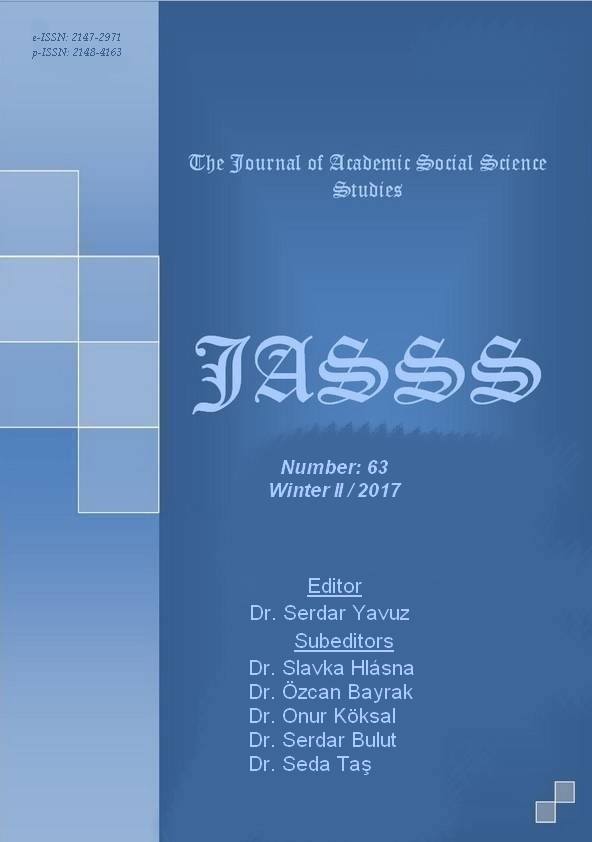Author :
Abstract
Osmanlı Devleti için 19. yüzyıl öncelikle idari alanda olmak üzere askeri, ekonomik ve siyasi anlamda birçok değişme ve gelişmenin yaşandığı bir yüzyıl olmuştur. Klasik Osmanlı idari yapısı olan eyalet sistemi yerine merkezi yapıyı güçlendirme adına çalışmalara başlanmıştır. Osmanlı Devleti’nin idari alanda yaşadığı bu dönüşümler genel olarak tüm Osmanlıyı; incelenecek konu itibariyle ise Ermenileri ve Kürtleri birçok yönden etkilemiştir. Bu çalışmada öncelikle Osmanlı Devleti’nin yönetimsel yapısı ile ilgili bilgi verilerek bu yapının değişimden nasıl etkilendiği açıklanacaktır. Bu temelden hareketle, Ermenilerin ve Kürtlerin Osmanlı idari yapısı içindeki değişimden nasıl etkilendiği ve bu etkinin onların ilişkilerine nasıl yansıdığı konusu incelenecektir. Osmanlılar, İslam devletlerinin geleneksel uygulamasını izleyerek bünyesinde yaşayan toplulukları millet yapısı altında dine göre sınıflandırmıştı. Osmanlı Devleti’nde nüfusa ait kayıtlar bile, etnik yapı ya da dil grubuna göre değil de dine göre tutulmaktaydı. Ermeniler, etnik köken, dil ve din açısından farklı olan Gayrimüslimlerdi. Kürtler ise Türkler gibi Müslüman ama etnik köken ve dil açısından farklı olan bir gruptu. Bu çalışma, Osmanlı Devleti bünyesinde varlık gösteren bu iki grup arasındaki iletişimin dayandığı beş temel nokta üzerinden yürütülecektir. Bunlar; Ermenilerin ve Kürtlerin Osmanlı Devleti içinde yürütülmekte olan misyonerlik faaliyetlerinden etkilenmeleri; cemiyetler kurmaları; basın-yayın faaliyetlerinde bulunmaları; Osmanlı Devleti içindeki faaliyetleri ve köy, mera, yayla problemlerini kapsayan toprak sorunlarıdır.
Keywords
Abstract
The 19th century has been a century of change for the Ottoman State primarily in the administrative area and development in military, economic and political terms. Instead of the classical Ottoman administrative structure, which is the state system, the center has begun to work on behalf of empowerment. These transformations, which the Ottoman State has experienced in the administrative area, are all Ottoman in general; Armenian and Kurds have been influenced in many ways by the subject to be examined. In this study, firstly the information about the administrative structure of the Ottoman State will be given and explained how this structure is affected from the change. With this in mind, we will examine how the Armenians and Kurds are influenced by the change in the Ottoman administrative structure and how this effect is reflected in their relations. The Ottomans, following the traditional practice of the Islamic states, have classified communities living in their own countries under the structure of the nation. Even the records of the population in the Ottoman State were kept according to the religion, not the ethnic structure or language group. Armenians were non-Muslims who differed in terms of ethnicity, language and religion. The Kurds, like the Turks, are a Muslim but a group that is different in terms of ethnicity and language. This study will be conducted through five basic points on which communication between these two groups in the Ottoman State is based. These; The influence of the Armenians and the Kurds on the missionary activities carried out in the Ottoman State; establish communities; to be involved in press-publication activities; Activities in the Ottoman State and land problems including village, pasture and plateau problems.





